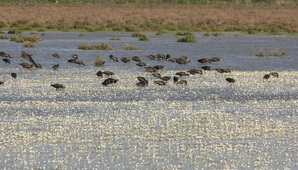 Part of a flock of 300+ Glossy Ibis near Trebujena
Part of a flock of 300+ Glossy Ibis near Trebujena 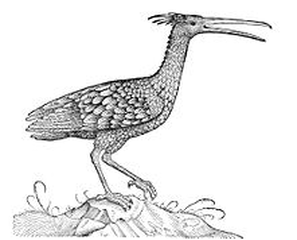 Gessner's 'Forest Raven' of 1555
Gessner's 'Forest Raven' of 1555 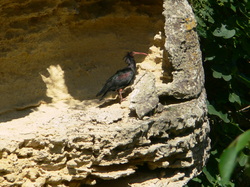 Bald Ibis on cliffs - Cadiz Province, May 2011
Bald Ibis on cliffs - Cadiz Province, May 2011 Fortunately, the Bald Ibis has proved to be easy to breed in captivity and there are now about 1,000 birds kept in a number of zoos and collections world wide. One of these is Jerez zoo which has a thriving captive colony. Given projects to reintroduce the species in Austria and elsewhere, it’s not surprising that a study was launched in 2003 to investigate this possibility in Spain. Although the Bald Ibis probably survived longer in the Alps than in Iberia, establishing a population in Spain seems to be a much better long term proposition. The Alpine population must clearly have been long distance migrants, but plans to induce the recently introduced birds there to migrate to Italy have met with mixed success. In contrast, there’s every chance that birds settled in southern Spain will follow the example of the Moroccan birds and be a little more sedentary.
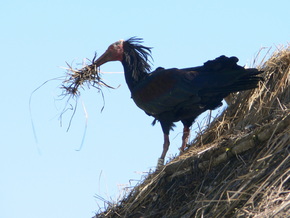 Bald Ibis collecting nesting material
Bald Ibis collecting nesting material 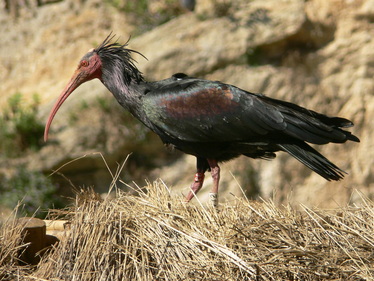 Bald Ibis - if you look closely the aerial of the transmitter can just be seen!
Bald Ibis - if you look closely the aerial of the transmitter can just be seen! Birds have also ranged over a wide area of southern Iberia with birds being seen on the Algarve (on a golf course!) in Portugal. A number of birds have clearly gone elsewhere (two birds left the area in 2005 and 14 in 2006) and some have been taken by Eagle Owls. A bird carrying a Spanish ring was seen in the Middle Atlas Mountains in Morocco in 2005, but little is known of their movements. However, some birds have been released with hi-tec radio telemetry devices so the movements of these birds’ at least are being very carefully tracked. Perhaps in some quiet corner of Spain or Morrocco a small colony of these spectacular birds is quietly forming. And spectacular they are too. OK with their gait, dark plumage and the bald pate fringed by feathery locks, they bear a surprising resemblance to fifties comic Max Wall, but seen close to the burnished plumage and bright eye give it a regal air. Listable? Probably not, but go and see them all the same!

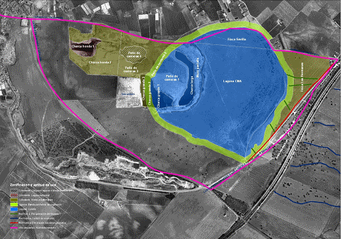
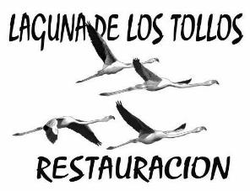

 RSS Feed
RSS Feed
